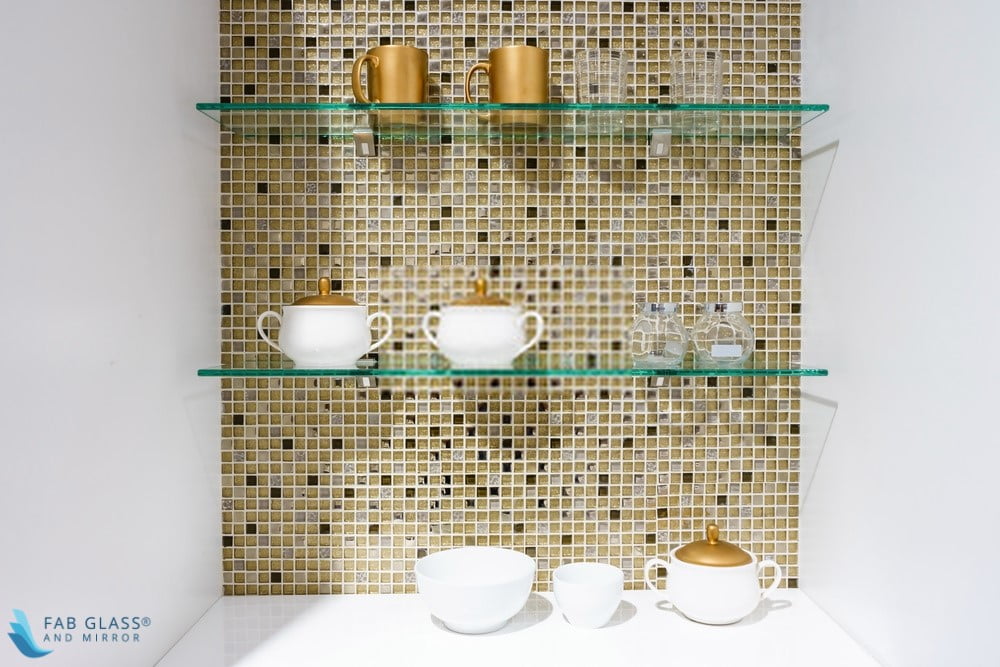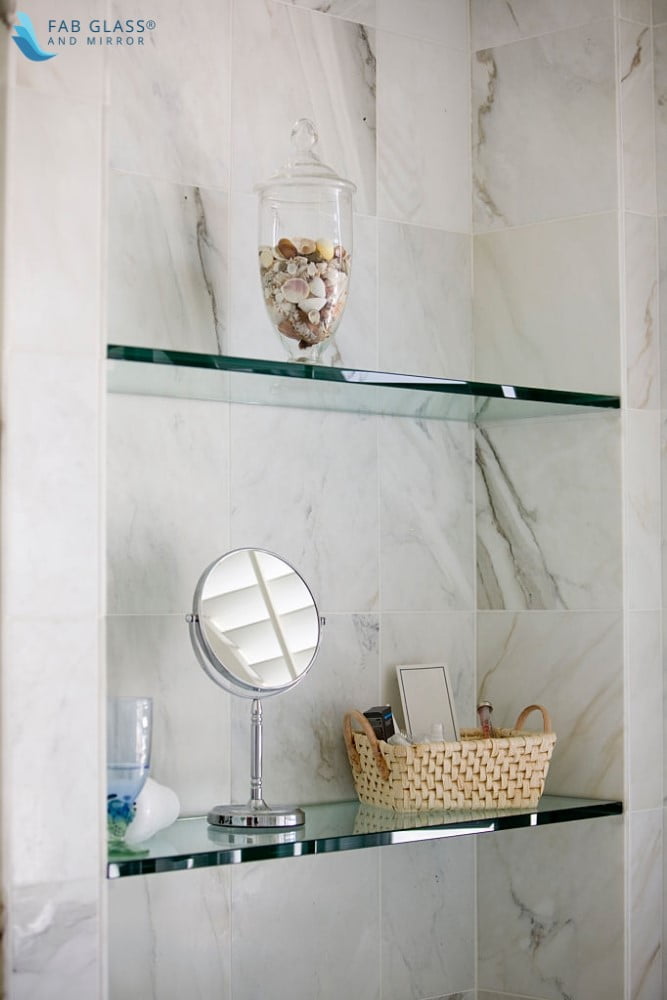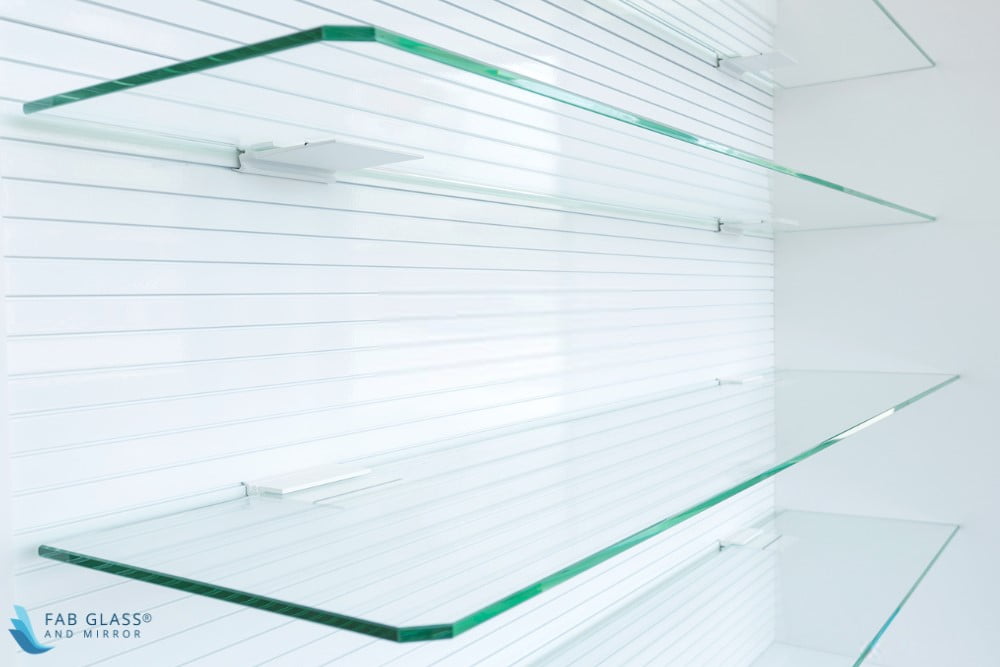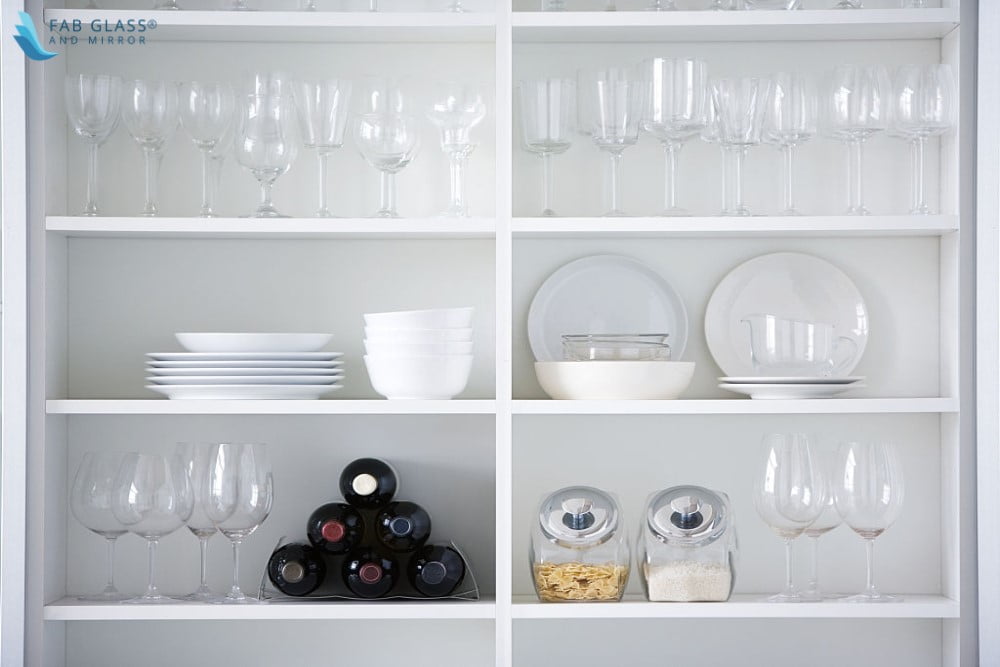Kitchens are the most frequent part of any household and are ideally the focal point in most renovations. Architects usually design the kitchen as a starting point and build around it, while allotting a pivotal role to the place where quite understandably most traffic from breakfast to those 2am snacks come. Anyways, since the household revolves around kitchens, the fixtures and fittings should be immaculate. There are countless ways in which you can improve your kitchen, but for this article we’ll go over glass shelves and how to place them in order to get the classiest look possible.

Benefits of using glass shelves in home
So why choose glass?
First and foremost, glass is durable, easy to clean, and extremely resistant to corrosion relative to wood which can easily rot in the semi-humid environment of the kitchen. Furthermore, wood loses its shine over time whereas glass can retain its original state for years.
In addition, glass gives you the option of throwing in a little versatility in your design. You can use multiple variants of glass in the same setting. Something quite difficult to achieve with wood. For example, you can use transparent, translucent, stained, engraved or a combination of the respective variants in the same setting if you know what you’re doing. However, combining mahogany with dark oak or spruce is quite complicated to put it bluntly.
But perhaps these advantages, beneficial as they are, pale in comparison to the fact that you can see through a glass shelf to examine the contents underneath if you have an ascended angle or above if you’re looking from down under. I’d like to see wooden shelves achieve that.
Types of glass available for glass shelves
Convinced or confused?
Well, Let’s talk functionalities! Quintessentially, you want to use a combination of transparent and translucent variants to really capture that pristine ambience. Transparent glass shelves should always be used for items in your kitchen that will be used or otherwise picked up quite often. These could be spices, utensils, appliances, shakers, wine glasses and what not. The transparency allows you to easily navigate between the assortment of items while preserving the voguish style of your kitchen. Translucent glass on the other hand, should generally be used for items that are there for viewing at a glance. Your baking clock, tiny potted plants, and other decorative pieces.

Apart from these mainstream variants, there a few special ones that require a little more sophisticated touch and are best used in minimal quantities. For instance, stained glass should only be used if the item placed on top of it is high in value. Don’t use it for storing your spoons. Instead, get a stained glass jar in contrast with the color of the shelf. Or use it to display that travel souvenir you collected from China. Russian dolls also beautifully compliment stained glass. Engraved glass works best when used as dividers between shelves or when it acts as a cabinet door. Keeping in line with the essence of cooking, your engravings should generally be centered around floral or geometric patterns but you can experiment if you wish. It’s your kitchen after all.
Positioning of shelf
Now that we’ve covered all the variants, time to discuss positioning.
Glass cabinets and shelves imbue a sense of openness and clarity in the kitchen, making it look wider or bigger than it actually is. This effect scales with the height you decide to place it on. Never place glass shelves or cabinets below wooden ones. Glass should always occupy a high and illustrious position.
Kitchens sometimes have bigger windows than other rooms for wafting that baking aroma to the neighbors. However, this does cause a bit of a conundrum when it comes to room for storing. That is if you’re working with wood. With glass, you can install picture-window cabinets that facilitated you without a solid wall and you can easily use it with a double-sided cabinet. This does not hinder the flow of natural light into your kitchen, but rather alleviates your setting from the traditionally monotone kitchen windows.

Contrary to what was stated earlier, glass may sometimes be used to serve as a cabinet door in some of the base cabinets of the kitchen. This measure is to be taken very carefully as not only do you need to ensure that whatever you’re placing behind that cabinet door is worthy enough to merit a glass door, but base cabinets that are glassed up can be easily broken or smudged by children and pets. It is also worth noting that anything placed in base cabinets is unattractive to kids but appreciable by other people. You could keep cookbooks, dull kitchenware, or wooden utensils. You need only be concerned about this with toddlers in the household. No toddlers or hyperactive pets? Go crazy!
Things to consider

No kitchen is holistically complete without a touch of wood. Do not overdo glass shelving. It works best when used sparingly. Furthermore, too much glass may cause the kitchen to seem fragile and thus not capable of forming a conducive and productive atmosphere where you can cook in peace without the fear of breaking stuff. Finally, the type of glass you should use is dictated by the rest of the furniture in your kitchen. Make sure that the visual scheme you’re going for matches the existing aesthetic of the kitchen (unless you’re planning to give it a complete makeover including new furniture). Have dark oak tables and chairs? Use stained glass! Have white wood? Go transparent!
One last thing to keep in mind is that in kitchens which open up into the lounge or the living area, you need to consider the amount of glass used in the respective setting as well. For example, you may want to lay off on that extra glass shelf if you’re lounge already has an abundance of them. That’s all you need to know to get started. Go hit the drawing board!